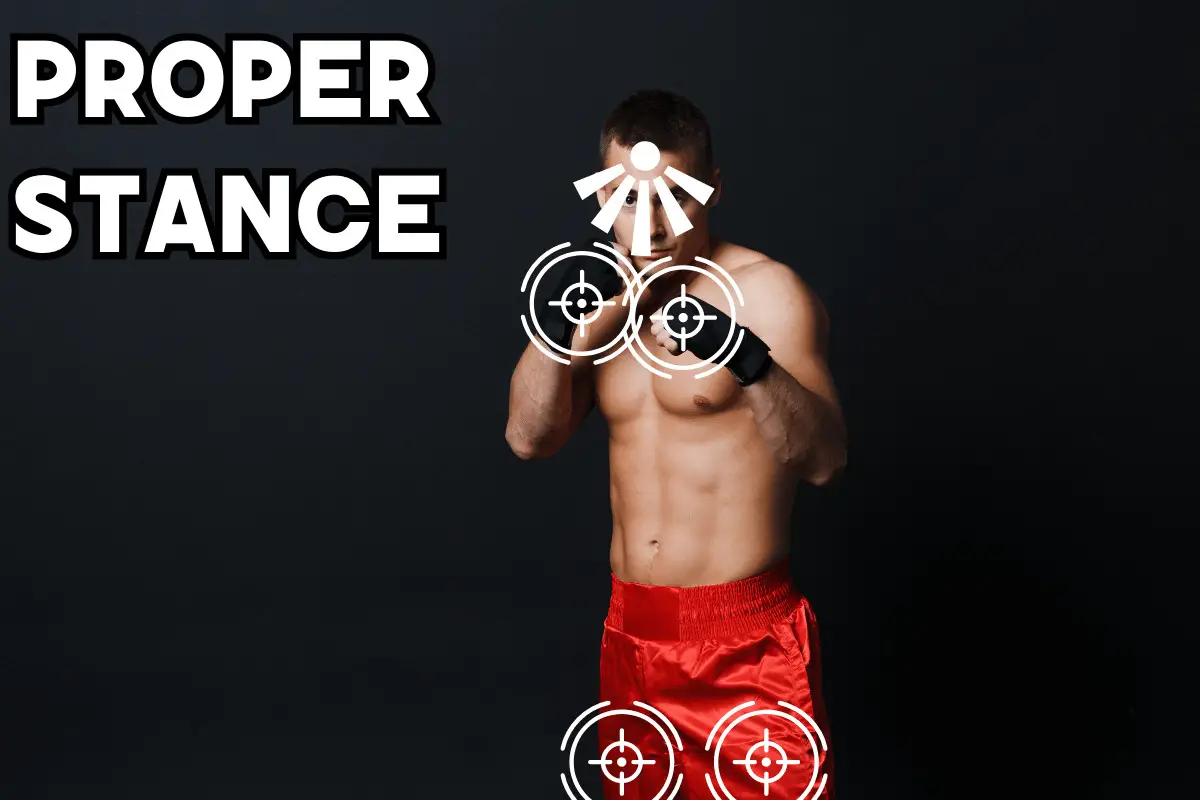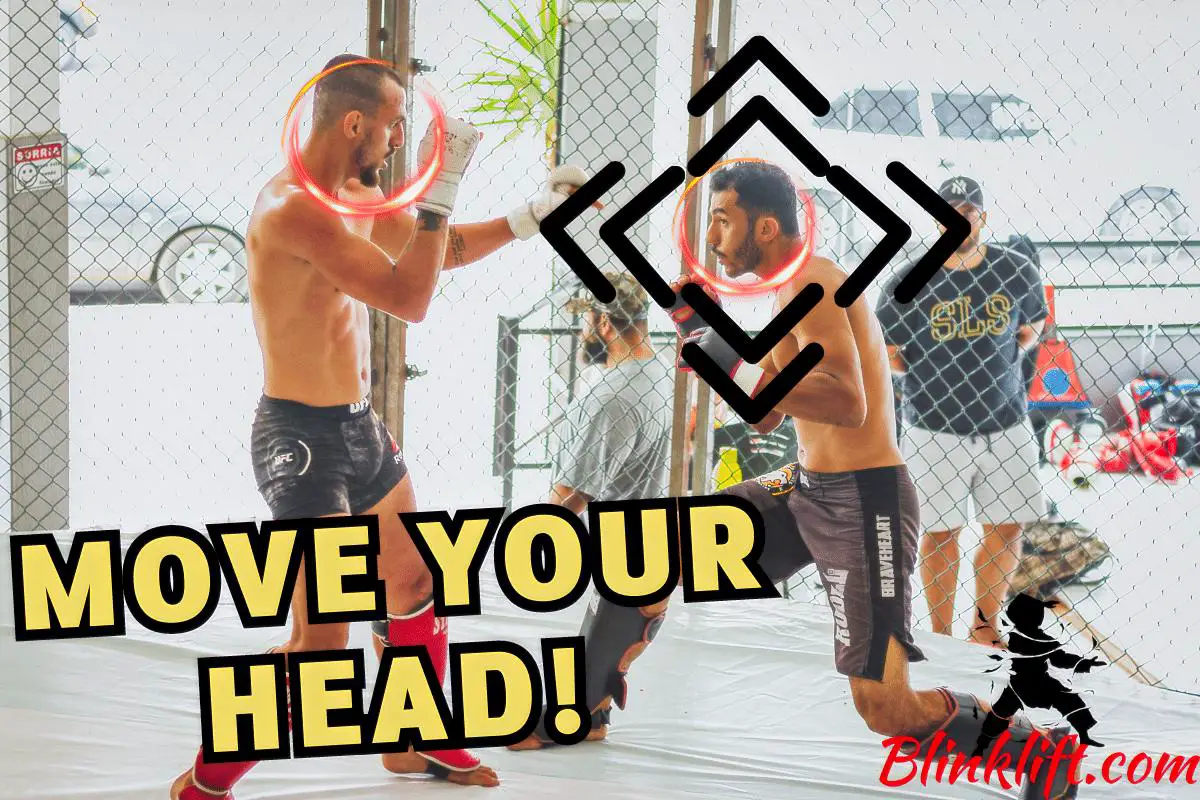Having excellent head movement skills in Muay Thai will help you evade punches, create openings, and be a much less expected fighter. You’ll be able to use your head to open up a lot of different angles, which, in turn, will help you attack more frequently.
Not only that, but you’ll also be able to dodge many attacks from your opponent, making you control the fight to a much better degree. So if you want to become a more distinguished, capable fighter, this is the article for you.
So what will we cover? We’ll begin with the essential head movement techniques, to ensure you know how to move your head to evade strikes and set up attacks.
Then, we’ll review various drills that will help you practice these techniques. And finally, we’ll break down the specifics of head movements and get into tips that’ll help you perform much, much better.
So we have a lot to cover. Let’s dive into the first part: essential techniques.
Muay Thai Head Movement Techniques
The first part of this article is going to be all about techniques. This is the key part of this article, as everything that comes after that is going to build upon it and assist you in mastering this part.
Think about it. What we’ll cover next is drills and tips. Both of these sections are going to help you boost your learning time for this part. Therefore, pay close attention to this section since it’ll bring you the most results.
If there was one section I could have chosen between the three I chose to include in this article, this would be it. So pay close attention and let’s dive into the first head movement technique in Muay Thai.
#1 – Slip
A slip involves moving your head to the outside of an opponent’s incoming punch while keeping your upper body in position. To slip, bend your knees slightly, tuck your chin, and move your head to the side while maintaining a good stance. After slipping, quickly return to your starting position or follow up with a counterstrike.

The slip can be the first technique you learn. So start practicing it as soon as you can. This will ensure you have the ability to open new angles by avoiding strikes. You can also slip kicks, but there are better ways to deal with kicks, which we’ll review in the next techniques.
#2 – Bob and Weave
The second head movement technique we’ll review is the bob and weave. This is less common in Muay Thai, and that’s for a good reason. It’s more popular in Boxing, for example, because it only includes punches.
However, Muay Thai also includes different kicks, such as the low kick, switch kick, and axe kick. Now when you bob and weave, you’re going to bend your back while rolling to one of the sides.
The bob and weave is a more dynamic head movement technique. Here, you’ll bend your knees and lower your body while moving your head in an elliptical motion, either side-to-side or diagonally. This technique helps you evade punches and move closer to your opponent to launch your own attacks.
It’s not as effective for Muay Thai because your opponents will catch you with your kicks when you do that. Therefore, it’s worth using only at very specific times.
#3 – Duck Under
The duck under is used to evade high punches or kicks. As your opponent throws a high strike, bend your knees and lower your body while moving forward. This movement allows you to go under the punch and potentially create an opening for a counterattack.
There are many attacks this opens up. For example, you have the spinning back elbow, which you can charge when you raise your back to a normal stance. It’s genuinely perfect for a spinning back elbow.
#4 – Pull Back
The next technique we’ll review only includes moving your head, so it’ll be easier to learn and perform compared to other ones on this list. Anyways, let’s see what the pull back is and when you should use it.
Pulling back is a quick backward movement of the head to evade straight punches or kicks. It’s crucial to maintain your balance and not lean too far back, as this could compromise your stance and defensive capabilities.
#5 – Step-Back
This is a simple head movement technique where you step backward while simultaneously pulling your head away from your opponent’s attack. The step-back is useful for creating space and avoiding close-range strikes.
I encourage you to use the step back when your opponent is in closer range than normal. It’ll allow you to evade elbows and knee strikes, which can be devastating and make you lose a fight.
This is the same as the pull back but with an included backward step. Furthermore, make sure not to overuse it, as that’ll create situations where the opponent expects you to perform the step-back and be more aggressive toward you.
It’ll also be great to throw strikes whenever possible. These have to be long-range strikes, preferably kicks. The Roundhouse kick is a fantastic option.
And these are the five head movement techniques in Muay Thai you want to start learning. These will help you skyrocket your defensive skills and make you a more capable fighter!
Muay Thai Head Movement Drills
This part is going to be entirely dedicated to drills. We all know that practicing is much better than reading guides or watching an instructional. And yet, many Muay Thai fighters seem to prioritize the latter over the former. They end up not progressing and learning nearly as fast as those who put in the time and effort in the fighting gym.
What we’ll do now is review ways you can practice the techniques we’ve covered in the previous section. Let’s delve into the first one!
#1 – Focus Mitt Drill – Slip and Counter
The first drill we’ll review is going to be the Slip and Counter. You probably have heard of it or seen someone else practice or do it in a real competition or spar. This is no coincidence. It’s one of the most important drills in the Muay Thai realm.
Here’s how it goes:
- Partner up with a coach or training partner who holds the focus mitts.
- Get into your Muay Thai stance and practice slipping the punches thrown by your partner.
- Your partner will throw straight punches (jabs, crosses) at your head, and you’ll use the slip technique to move your head to the outside of the punch.
- After slipping, immediately counter with your own strikes, such as hooks or uppercuts, to the mitts held by your partner.
- Focus on maintaining a proper stance and returning to the center after each slip and counter.
As you can see, it’s one of the most effective head movement techniques. When you combine defense with offense, everything seems to connect like the world is telling you that what you’re doing is the right path.
#2 – Shadowboxing with Head Movement
The next drill we’ll review is shadowboxing. We all know what it is, but how many fighters actually put in the time to practice their weaknesses and hone their strengths? Not as many as you think; that’s for sure.
Although exceptionally popular, most fighters are lazy, which makes it quite easy to stand out. You must use everything that you can to improve and you’ll become exceptional. Don’t be like most people.
Here’s the second drill in play;
- Shadowboxing is an excellent way to practice head movement without a training partner.
- Visualize an opponent in front of you and practice slipping, bobbing and weaving, ducking under, rolling, and stepping back to evade imaginary strikes.
- Incorporate defensive movements into your combinations and footwork as you move around the training area.
#3 – Reaction Drill
The next drill we’ll review is called the reaction drill. This is when you partner up with someone you trust and ask him kindly to throw light punches at you. These punches can be the jab, cross, hook, uppercut, overhand punch; whatever, it doesn’t matter.
Your training partner can practice his punches while you practice reacting to his punches with head movement solely.
- Have a partner throw random punches at you (lightly) while you focus on evading them using various head movement techniques.
- Your partner can throw single strikes or combinations, and your task is to react quickly and move your head accordingly to avoid getting hit.
- This drill improves your reflexes and helps you get comfortable with reacting to real-time strikes.
#4 – Pad Holders with Varying Punches and Kicks
- Work with a pad holder who calls out different combinations for you to defend against.
- The pad holder will mix up punches, kicks, and knees, forcing you to use appropriate head movement techniques to evade each strike.
- This drill simulates a more dynamic and unpredictable sparring situation, improving your ability to adapt and defend effectively.
#5 – Sparring with a Focus on Defense
This is one of the best ways to improve your head movement abilities. What you’ll do now is go into spar and you can decide whether to share it with your opponent, but what you’ll do is focus only on head movements and general defense. You can use footwork and all of the defensive things you have in your mind.
If you don’t share this little secret with your opponent, throw a few hits when you see it suitable. It’ll actually be better if the only hits you throw are after you open angles using head movements.
This is going to skyrocket your Muay Thai and defensive skills. Try it out in a real spar and you’ll begin experiencing the benefits real soon!
- During sparring sessions, focus solely on your defensive skills, particularly your head movement.
- Avoid engaging in full-force offense; instead, concentrate on slipping, bobbing and weaving, rolling, and countering when opportunities arise.
- Communicate with your sparring partner to work on specific defensive aspects, and switch roles to give both partners a chance to practice head movement.
Muay Thai Head Movement Tips
Let’s now review tips that’ll help you perform much better in fights by using head movements properly. You should implement all these tips to see a significant change in your mindset and in the way you perform the techniques we’ve reviewed in the first part.
I would highly recommend bookmarking this article, as it’ll give you access back to it whenever you want to refresh your memory and learn about this skill set once again. You will not be able to remember everything we have reviewed here. Rather, it’ll be worth it to bookmark this article and re-read it whenever you find the time to do so.
That is, of course, only if you’re serious about your Muay Thai training and about improving your skills as a fighter. So let’s dive into the first tip.
#1 – Maintain Proper Stance
Your head movement should always start from a solid and balanced stance. Keep your feet shoulder-width apart, knees slightly bent, and weight distributed evenly between both legs. Your hands should be up, protecting your head, and your chin tucked in to reduce the target area.

Your fighting stance is everything. It’s the way you attack, how much power you’re able to generate, what techniques you’re using effectively and the opposite, and how balanced you are. These factors all influence how good of a fighter you’ll be.
So make sure to get your fighting stance perfect before anything else. This should be a top priority.
If you want to learn more about how to perfect your fighting stance in Muay Thai, follow this link.
#2 – Stay Relaxed and Loose
Tension in your neck and upper body can hinder your head movement. Stay relaxed and loose, allowing your head to move freely and quickly in response to your opponent’s attacks. Avoid stiffening up, as it slows down your reflexes and makes you more predictable.
#3 – Eyes on the Opponent
The third tip is something worth understanding. Where you look is where you’ll hit. If your goal is to hit the opponent’s head, you must look at it before throwing the strike, whether it’s a punch, kick, or elbow strike.
Keep your eyes focused on your opponent’s chest or midsection. This allows you to see their body movements and telegraph their attacks, giving you more time to react and move your head accordingly.
Of course, this only applies when you’re in defense mode. By looking at the opponent’s chest, you’ll also be able to observe his legs, which tells you plenty about his next moves.

#4 – Move Your Head, Not Just Your Upper Body
This article wasn’t about how to move your upper body effectively in Muay Thai. What it was about is how to move your head in a way that’ll allow you to evade strikes and set up punches. When implementing the techniques we’ve learned, try to move your head together with your upper body, or even move it alone.
Effective head movement involves moving your entire head, not just your upper body. When slipping or rolling, move your head to the outside of the incoming strike while keeping your upper body relatively stationary. This helps you maintain balance and avoid being caught off guard.
#5 – Practice Different Techniques
Work on a variety of head movement techniques, such as slipping, bobbing and weaving, ducking under, rolling, and stepping back. Each technique has its advantages in different situations, so practice them all to be well-rounded in your defensive capabilities.
I always say this: the more you know, the more competent and dynamic you’ll be. Therefore, if you can continue learning to the end of time, you’d want to take that.
Unfortunately, many Muay Thai fighters don’t understand that learning martial arts is based on, well, learning. And what better way is there to learn than to practice the techniques yourself?
#6 – Time Your Head Movements
Proper head movement requires good timing and footwork. Develop your sense of timing by practicing with a partner or coach who throws various strikes at you. Focus on using the right head movement technique at the right moment to evade the attacks. Footwork is crucial in combination with head movement to ensure you maintain the right distance and angle during defensive maneuvers.
I want to emphasize this point again because it’s so important. Training with another fighter that can surprise you will improve your reflexes and allow you to learn proper head movements in so much less time.
Make sure to train with someone else if you desire to learn quicker and better!
Final Words
You’re now a much better Muay Thai fighter. You know how to move your head in a way that helps you evade punches, defend yourself, get hit less often, and create more openings and angles to attack more frequently.
This is the power of head movements. From now on, I want you to implement at least a single head movement technique that we’ve reviewed in this article.
Remain patient. Rome wasn’t built in a day and so won’t your Muay Thai skills. You must practice, practice, and continue to practice. While it might be a bit pessimistic, work never ends and so you always have stuff to work on, whether it’s offense, defense, punches, kicks, the jab, cross, hook, knee strikes; you name it.
And if you want to keep honing your defense, I wrote a guide to Muay Thai’s best defensive moves that you must know to call yourself a fighter. So follow the link to see what they are and how they can help you win more fights.
Here are other articles you’d benefit from reading:
How to Catch Kicks in Muay Thai – It’s Actually Simple!
Slip 101 (Muay Thai) – How to Slip and Follow-Up
Is the Bob and Weave Used in Muay Thai and MMA?
Check 101 – A Complete Muay Thai Technique Breakdown

